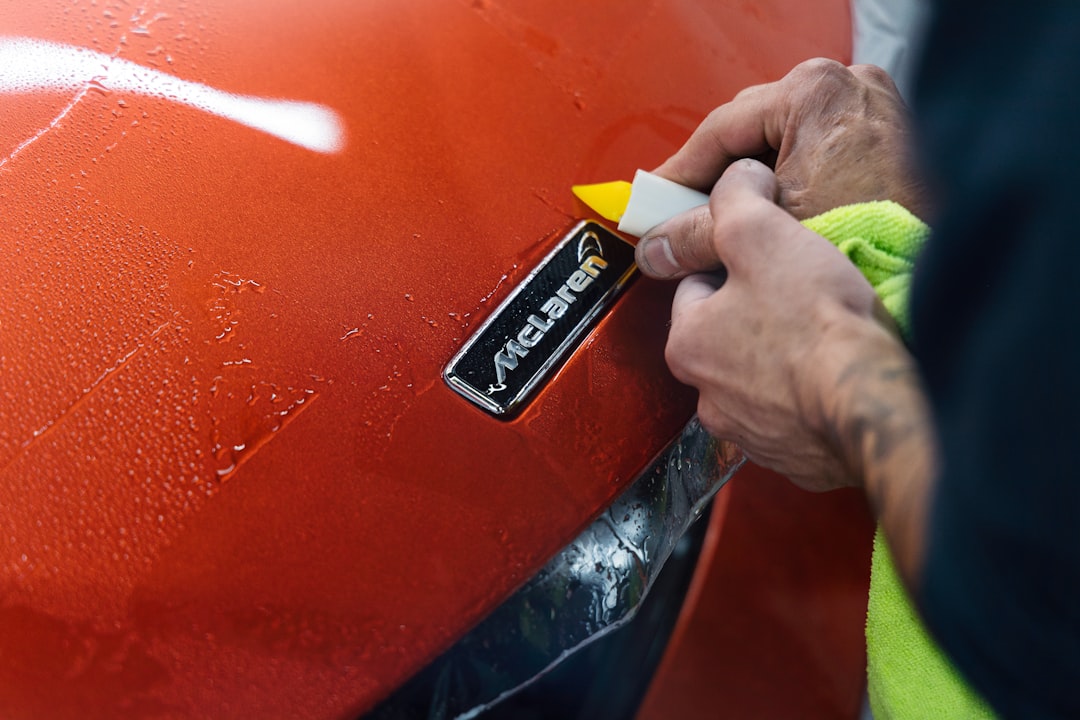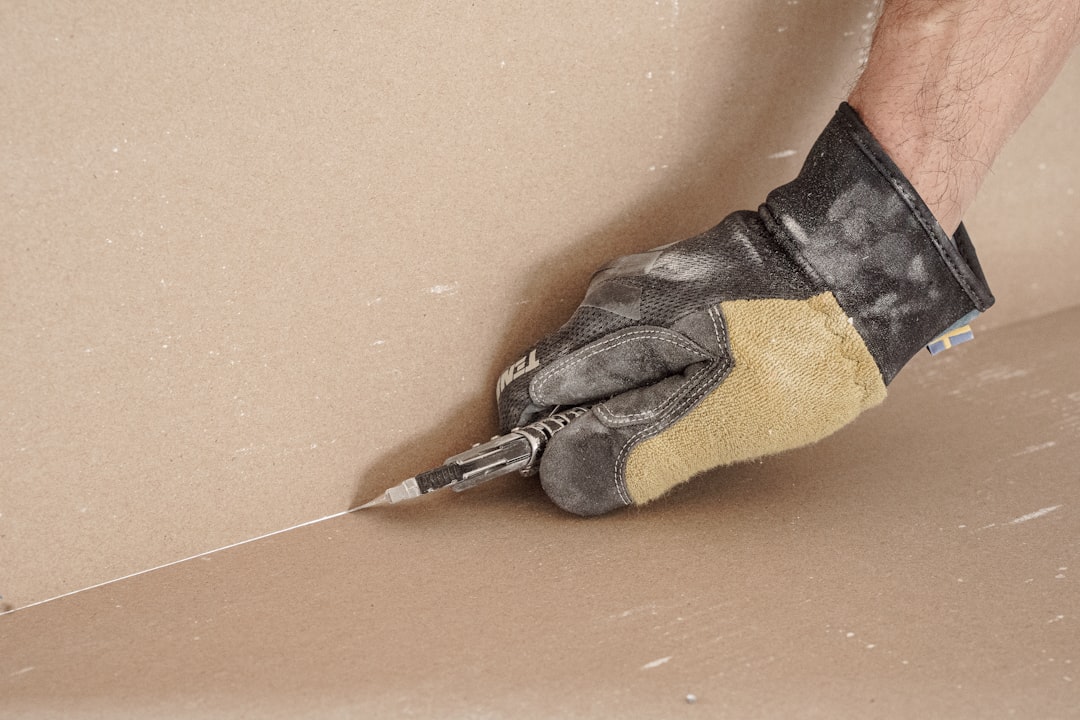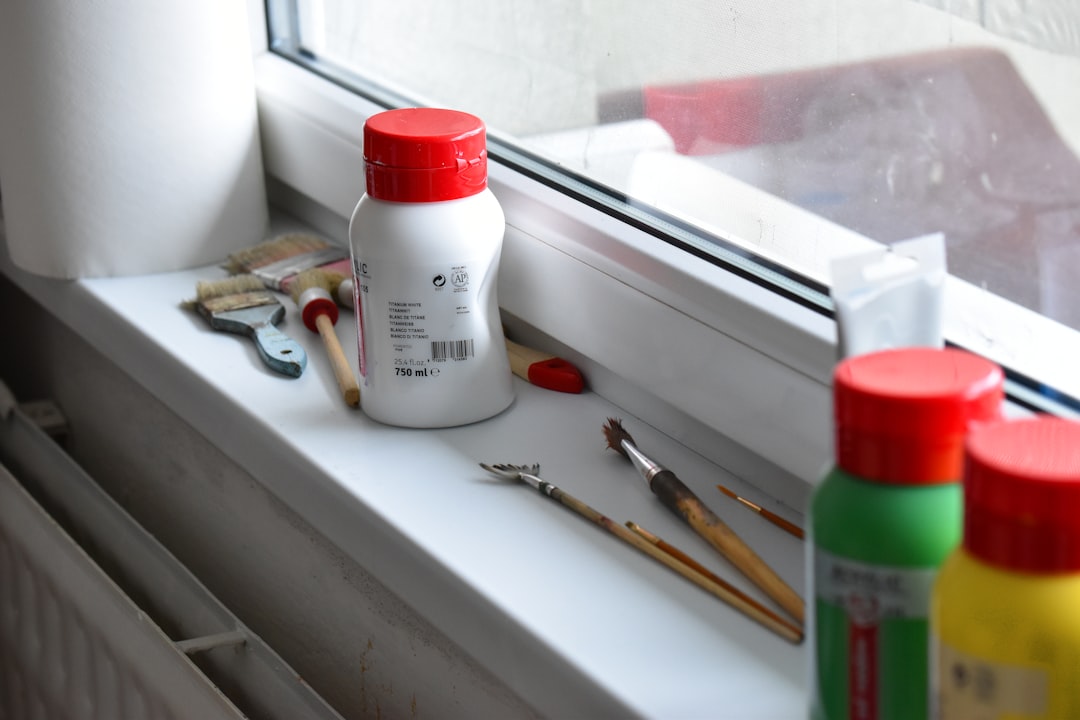

Engage prospects with a scan and streamline customer engagement with FREE QR code marketing tools by Sona – no strings attached!
Create a Free QR CodeFree consultation

No commitment

Engage prospects with a scan and streamline customer engagement with FREE QR code marketing tools by Sona – no strings attached!
Create a Free QR CodeFree consultation

No commitment
QR codes have become a strategic powerhouse in connecting offline engagement with online action for paintless dent repair services businesses amid rising PDR market growth. They offer a frictionless, scalable, and effective way to boost customer acquisition, streamline lead generation, and drive more appointments without an app download or complex setup. Yet many PDR marketing teams struggle to convert real-world moments of interest, such as a passerby spotting a dent repair flyer or seeing branded vehicle signage, into actionable digital leads. The result is missed opportunities and high-value prospects being left untracked or lost to faster competitors.
Marketing leaders in paintless dent repair services navigate a landscape where customer expectations center on speed, transparency, and ease of service access. Traditional methods, such as printed brochures or manual data entry from paper forms, often add friction, causing even highly motivated leads to fall out of the funnel. QR codes bridge this gap by allowing teams to unify offline and digital campaigns, minimize missed leads, and capture the attention of high-intent prospects in real time. Learn more in QR codes in marketing.
Embedding QR codes on high-impact assets, from hail damage repair mailers to mobile van wraps, helps paintless dent repair services close the loop between awareness and conversion. This guide explores how QR codes drive higher conversion rates while providing audience insights, accurate lead tracking, and more precise follow-up. It addresses challenges around prospect visibility, lead prioritization, and personalized targeting for both new and returning dent repair customers, and shows how to turn every scan into measurable pipeline.

QR codes bridge the gap between physical marketing materials and digital outcomes, solving the recurring problem of offline interest failing to convert. Many paintless dent repair businesses struggle with prospect anonymity and delayed lead capture, which leads to lost opportunities and slow follow-up when speed matters most.
To improve conversion, think of QR codes as dynamic calls to action that meet customers where they are. Replace analog processes like paper estimate forms at community events, unwieldy brochure URLs, or manual phone intake with guided, mobile-first conversions triggered by a scan. Then connect each scan to your CRM so your team can respond quickly and with context. See Sona’s HubSpot guide.
Example: Replace paper quote request pads at a home show with a dynamic QR code that routes to a mobile estimate wizard. On submit, push the lead to your CRM with photos, zip code, and damage type. Add QR stickers to technician badges, van doors, and courtesy cards so customers can request a callback, leave a review, or view repair options immediately. Every interaction becomes measurable and actionable.
Modern solutions like Sona QR automate this workflow with embedded identification, audience segmentation, and CRM enrichment. Even anonymous scanners are classified by channel and intent, assigned to the right pipeline stage, and routed to the right follow-up, which increases speed to lead and boosts conversion.

Persistent problems like missed high-value prospects, lack of visibility into lookers who never submit forms, and slow lead capture especially impact the PDR sector. People notice a branded van or a hail repair poster while out and about, but without a seamless digital transition, momentum fades and competitors who respond faster win the job.
QR codes remove these friction points. A single scan opens an estimate tool, calendar booking, insurance check, or damage assessment flow. That immediate bridge from curiosity to action saves time and money for both the customer and your team, while reducing data entry errors. It also sets expectations early by showing turnaround times, pricing ranges, and before-and-after results.
For recurring uses, such as estimate handouts, dealership partner brochures, and invoices, QR codes turn static materials into measurable conversion points. As you iterate on messaging and placement, your offline channels become as accountable as your digital ads.
PDR teams often wrestle with incomplete or outdated customer data that makes precise targeting hard. QR codes unify data capture at every offline touchpoint, creating cleaner lists and richer behavioral insights. Choosing the right format ensures each scan triggers the most useful action for the customer and your team.
Dynamic QR codes are especially valuable in PDR. You can update destinations by storm event, inventory of time slots, or partner location, then keep the same printed asset in the field. With Sona QR, you can manage all codes centrally, apply UTM parameters, and A/B test destinations without the costs of reprinting.

Paintless dent repair teams often have dormant lead lists and campaigns that are difficult to attribute. Growth is unlocked by putting QR codes where offline interest is high but digital capture is weak, then tagging each code to attribute results properly.
By placing QR codes in these high-intent zones and attributing each scan to a specific channel or asset, you turn passive interest into measurable opportunities with clear next steps.

Traditional marketing often loses impact because of anonymous interactions, delayed outreach, and untracked handoffs. By using QR codes to guide customers into specific actions, PDR teams convert more often and collect data that improves future campaigns.
Layer in account-level identification and context-driven triggers, such as weather-based retargeting after hail alerts. This yields measurable outcomes like faster claim-to-booking times, higher review rates, and increased upsell conversions. Each QR-driven interaction anchors your attribution and strengthens your revenue forecasting.
Every QR scan is a high-fidelity signal of interest, location, and timing. When you deploy codes across touchpoints, you can segment audiences by journey stage, service type, and channel. This allows you to personalize follow-up and spend media budget where it converts. For deeper tactics, see Sona’s retargeting playbook.
Visitor deanonymization and CRM enrichment transform scans into usable profiles—start with Sona’s account identification. With Sona QR, you can auto-sync segments to HubSpot, Salesforce, or ad platforms. Send hail prospects a Same-week hail repair calendar, door-ding audiences a One-hour ding fix special, and event scanners a Post-event demo replay with a booking code. The result is faster progression from first scan to booked appointment.

Many PDR teams juggle disconnected campaigns across print, social, and field operations. QR codes unify these efforts and make every asset a smart, measurable entry point into your buying journey. The key is to map each physical touchpoint to a digital destination that advances the customer to the next step.
With a centralized platform like Sona QR, you can manage all these codes in one place, apply consistent UTM structures, monitor performance by asset and location, and sync scan data with your CRM and ad platforms. This gives your team a connected offline-to-online funnel and the ability to improve performance in real time.
Getting results from QR campaigns requires clarity of purpose, smart design, and disciplined measurement. Use the following steps to plan, launch, and optimize your PDR initiatives, and build a repeatable playbook that turns scans into booked appointments.
Start by choosing one or two high-intent moments to target, such as post-storm neighborhoods or in-shop waiting areas. Then build a simple, compelling journey: a scan that leads to a fast estimate or booking experience, instant CRM capture, and automated follow-up with a clear next action.
Begin with a specific conversion gap to close. For example, your team may see delays in claim scheduling after hail events, low review collection after service, or inconsistent insurance data capture. Selecting one gap focuses your creative and operational choices.
With a clear use case, you can map the shortest path from scan to value and avoid cluttering the experience with extra steps.
Choose between static and dynamic QR codes based on tracking needs, flexibility, and scale. Dynamic codes are ideal for PDR since they support analytics, retargeting, and destination updates without reprinting.
If you expect to optimize creative or run seasonal offers, dynamic codes through Sona QR provide long-term flexibility and data depth that static codes cannot match.
Design for visibility, comprehension, and trust. Your code must be easy to see, quick to scan, and paired with a benefit-led call to action that explains the payoff. Then test in real conditions before going live.
Add trust indicators near the code, such as Secure and no app needed, or Average 24-hour turnaround, to reduce hesitation and increase scan rates.
Roll out codes where they naturally fit the customer journey. Prioritize assets that combine high visibility with high intent, and tailor the destination for each placement to shorten time to conversion.
Phased deployment lets you measure and scale. Start with a few assets, identify winners, and expand based on performance.
Measurement converts QR codes from a convenience tool into a growth engine. Track the full journey from scan to booked appointment and revenue, then iterate frequently.
As results compound, document your playbook for the team: which assets convert best, which offers resonate by service type, and how fast you must respond to win peak-season demand.
Visibility from scan to closed booking is essential for proving impact and optimizing spend. Robust attribution clarifies which offline exposures drive revenue and where to invest next. For measurement frameworks, see Sona’s offline attribution.
The goal is to connect first touch to booked appointment and beyond. That requires tagging every code, enriching every scan with context, and syncing data to your CRM. With Sona QR and Sona.com, you can move from basic scan counts to multi-touch attribution that connects real-world scans with website visits, ads, and sales activity.
Seamless technology integration reduces lead loss and accelerates wins. Teams that track at this level of detail can redeploy budget to the highest-yield placements and respond faster when storms create surges in demand.
Scaling QR performance requires consistent execution and thoughtful iteration. Avoid generic deployments and invest in tactics that match how PDR customers discover and book services in the real world.
Consider creative deployments such as QR stickers on temporary parking signage after a hailstorm or QR links on digital receipts for insurance renewals. These placements intercept intent at precise moments and convert interest into action.
Many PDR teams succeed by removing friction from high-intent moments and by transforming physical engagement into digital action. The best examples pair strong placement with clear CTAs and tight follow-up.
Some teams also invite user-generated content with QR prompts that ask customers to upload their before-and-after photos in exchange for referral rewards. This approach turns satisfied clients into advocates and supplies authentic visuals for future campaigns.
Industry leaders emphasize embedding QR capture into daily sales and dispatch workflows. Automated notifications from scan events cut response time, which often determines who wins the job after a hail event or insurance referral.
Pitfalls to avoid include using generic codes that cannot be attributed, burying codes in cluttered designs, sending scanners to slow-loading pages, and failing to follow up quickly. Harmonize QR strategy, campaign tracking, and rapid response to maximize both insight and bookings.
QR codes are now an essential asset for modern paintless dent repair services. Turning every physical asset, from flyers to invoices, into a digital entry point ensures prospects are never left anonymous and that no opportunity is missed because of delays or outdated information. The lift comes not only from more scans but from better journeys, faster response, and accurate attribution.
By transforming offline encounters into trackable, actionable touchpoints, paintless dent repair businesses close attribution gaps, accelerate lead capture, and create seamless customer experiences. With strong integration, robust analytics, and centralized campaign management, teams can match the speed and precision today’s market demands and convert every scan into growth and revenue. Sona QR provides the infrastructure to generate dynamic codes, manage destinations, and sync data with your CRM. Sona.com extends that value with identity resolution and multi-touch attribution so you can connect scans to pipeline and prove ROI with confidence.
Start with one high-intent use case, such as hail mailers or van signage, instrument it properly, and iterate quickly. Within weeks, you will learn which placements and messages move the needle and you will have a playbook you can scale across seasons and markets. Start creating QR codes for free.
QR codes have transformed paintless dent repair services from traditional outreach into dynamic, measurable growth opportunities. Whether it’s attracting new customers, enhancing service experiences, or streamlining appointment bookings, QR codes turn every printed flyer, vehicle decal, or invoice into an interactive gateway, capturing real-time engagement data to boost conversions and client satisfaction. Imagine knowing exactly which marketing materials bring in the most repair requests—and being able to optimize your campaigns instantly.
With Sona QR, you can create dynamic, trackable QR codes in seconds, update campaigns on the fly without reprinting, and link every scan directly to your revenue stream. No more guessing which ads work or wasting resources on ineffective promotions—just smarter, more profitable marketing that drives your paintless dent repair business forward. Start for free with Sona QR today and turn every scan into a new customer, a booked appointment, or a loyal referral.
Paintless dent repair is a service that removes dents from vehicle panels without affecting the original paint, offering a faster and cost-effective alternative to traditional methods.
Paintless dent repair works by carefully massaging and reshaping the damaged metal back to its original form without the need for repainting.
The article does not specify exact costs for paintless dent repair services.
Benefits include saving time and money, avoiding repainting, reducing data entry errors, faster turnaround, and maintaining the vehicle's original paint.
The article suggests using QR codes on vehicle signage, mailers, or local marketing materials to connect with nearby paintless dent repair services.
Turnaround times can be shown early via QR code tools, with some estimates available in as little as 60 seconds.
The article references fixing hail damage and door dings but does not provide a comprehensive list of dent types.
QR codes can link to insurance coverage checks, indicating that paintless dent repair can be coordinated with insurance, but coverage varies and should be verified.
The article does not provide information about warranties for paintless dent repair services.
Look for shops that use modern tools like QR codes for quick estimates, have transparent pricing and turnaround times, and provide prompt follow-up integrated with CRM systems.
QR codes connect offline interest to digital actions by enabling instant estimates, appointment bookings, insurance checks, and lead capture without apps or manual data entry.
Common QR code formats include web links to booking or estimate pages, vCards for contact saving, forms for damage assessment, SMS or email templates for quick communication, and review requests.
Effective placements include mobile PDR vans, repair shop waiting areas, direct mailers, event booths, invoices, and service reports.
Dynamic QR codes allow real-time updates to destinations, detailed tracking, audience segmentation, and campaign optimization without reprinting materials.
Avoid using generic codes without attribution, cluttered designs, slow-loading landing pages, and delayed follow-up that can reduce conversion rates.
By tracking scan-to-booking conversion rates, time-to-first-response, asset-level scan data, and syncing with CRM systems for attribution and revenue measurement.
Define a clear use case and measurable goal, pick the QR code type, design and test for visibility and ease of use, deploy across high-impact assets, and track plus optimize performance.
Yes, QR codes on follow-up cards or repaired vehicles enable easy booking for maintenance or additional services, improving retention and upsell opportunities.
Use Sona QR's trackable codes to improve customer acquisition and engagement today.
Create Your FREE Trackable QR Code in SecondsJoin results-focused teams combining Sona Platform automation with advanced Google Ads strategies to scale lead generation

Connect your existing CRM

Free Account Enrichment

No setup fees
No commitment required

Free consultation

Get a custom Google Ads roadmap for your business






Launch campaigns that generate qualified leads in 30 days or less.
